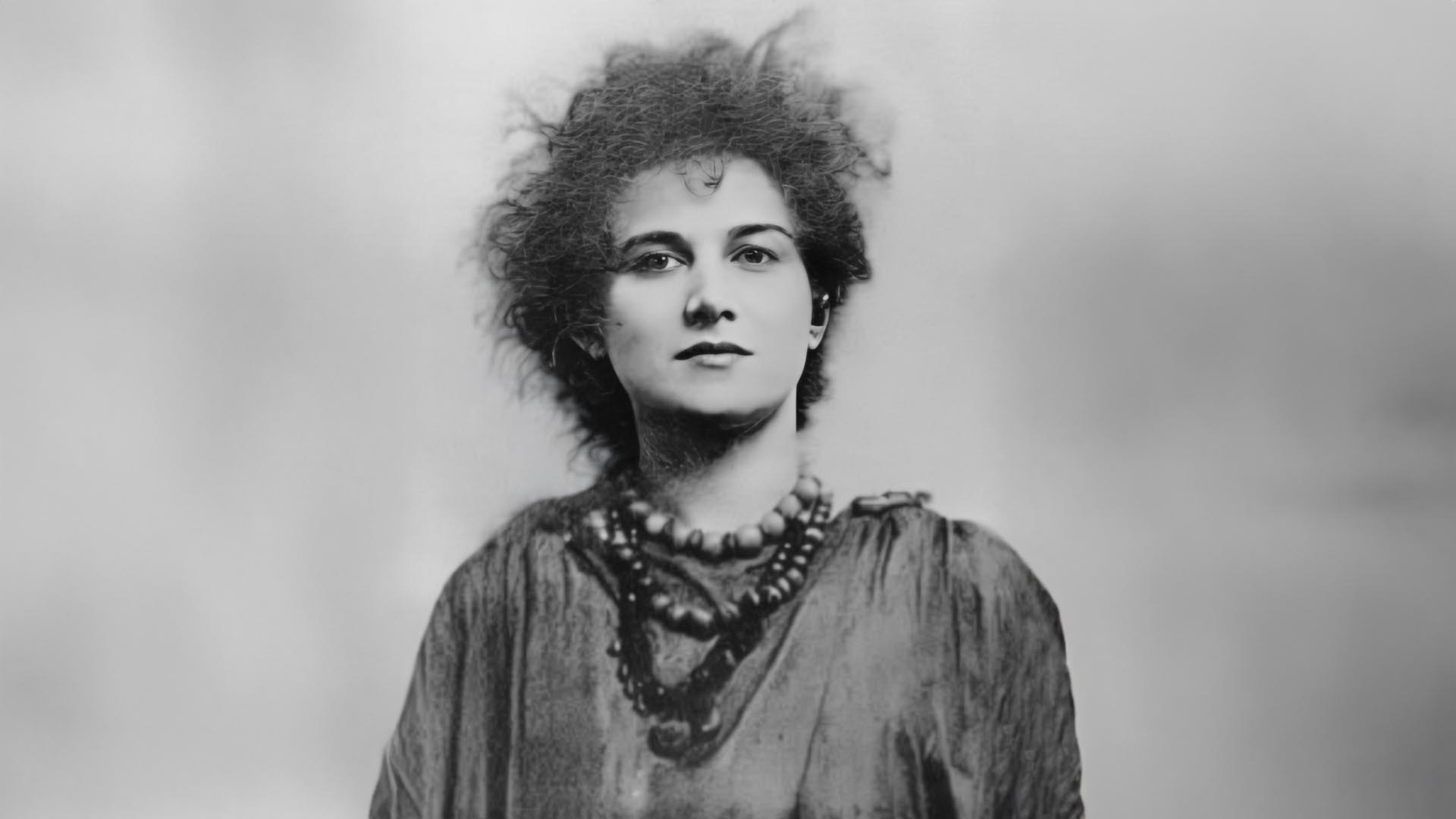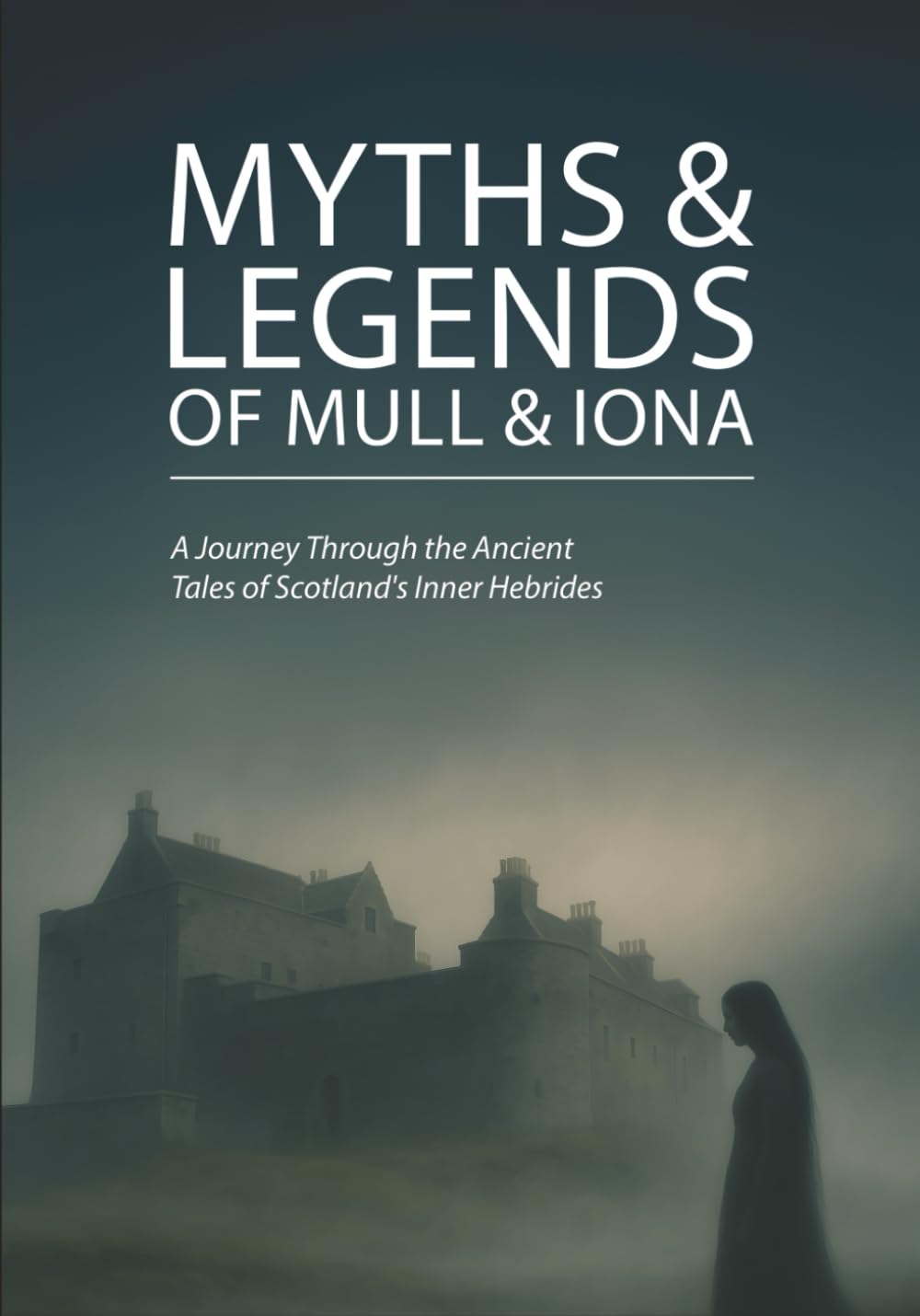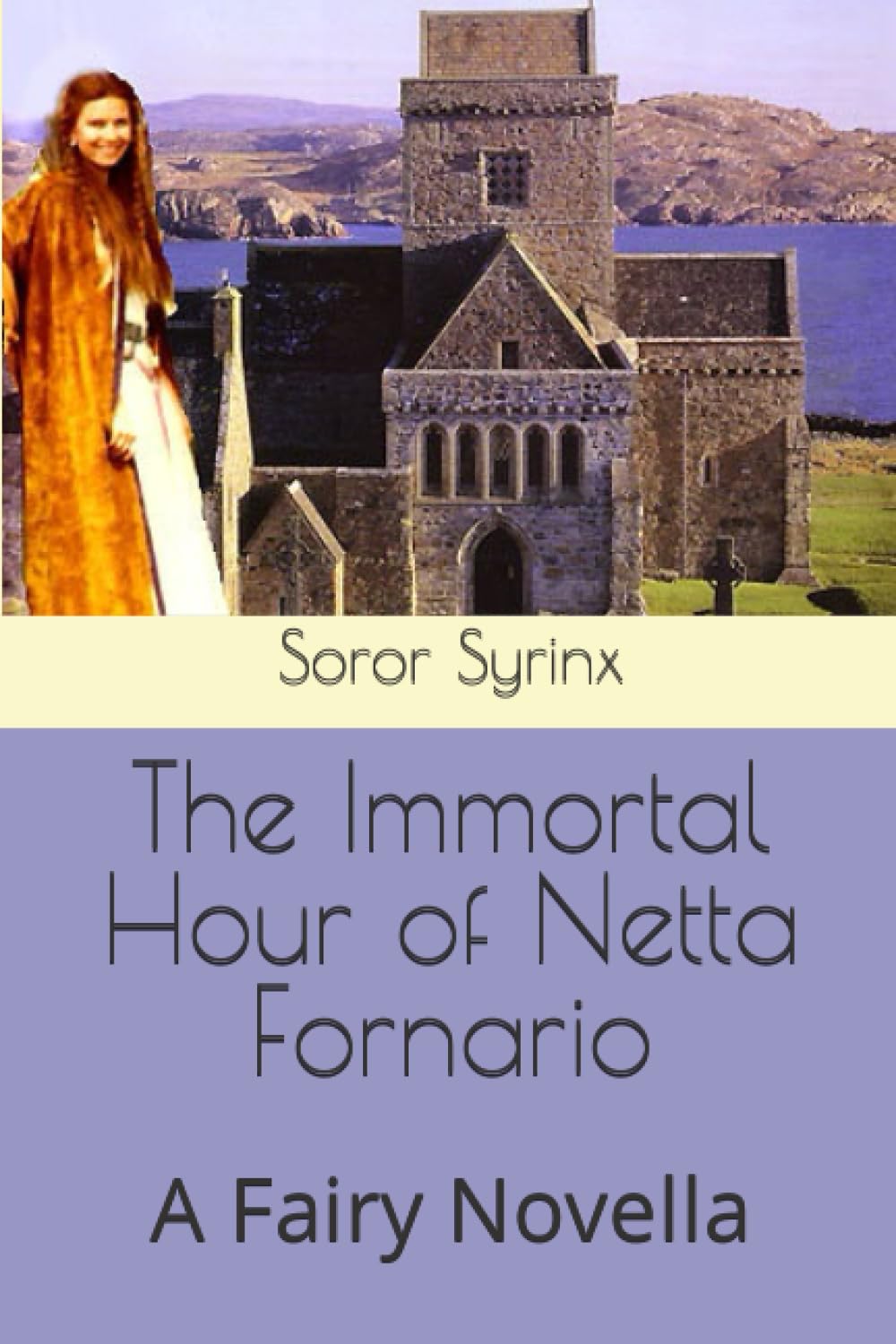The Isle of Iona, a small Scottish island steeped in profound religious and mystical history, became the setting for an enduring enigma in November 1929: the death of Netta Fornario. While officials officially attributed her death to “exposure to the elements,” the bizarre circumstances surrounding the discovery of her body suggest a far more complex narrative. She was found naked on a fairy mound, with a knife nearby. Local reports mentioned strange lights and a cloaked figure. All of this points to something more than a simple accident.
Netta Fornario’s personal occult beliefs are central to how her death is interpreted. She was involved with the Alpha et Omega Temple and claimed to have telepathy and “Green Ray elemental contacts.” Her comments about psychic attacks and “messages from other worlds,” including a “rudderless boat” in the sky, frame her observations as personal, mystical experiences. This is different from a conventional unidentified aerial phenomenon (UAP) sighting. The connection between her internal world and external perceptions is key to understanding her story. It is a cultural and psychological enigma, not just a crime report. This makes it a compelling narrative for anyone interested in historical mysteries and folklore.
Netta Fornario: A Seeker and Iona’s Mystical Veil
Born Nora Emily Fornario in Egypt in 1897, Netta developed a lifelong fascination with magic and the occult. She became a member of the Alpha et Omega Temple, an offshoot of the Hermetic Order of the Golden Dawn. Netta believed firmly in her psychic abilities, including telepathic healing. Her friend, Dion Fortune, noted Netta’s “especial interest in the Green Ray elemental contacts.” This was a pursuit Fortune found concerning. Fortune suggested Netta was “going into very deep waters.”
Netta’s deep immersion in the occult was not a casual interest. It was the fundamental framework through which she understood the world. Her belief in psychic attacks and elemental contacts gives an internal explanation for her agitated state. It also explains the “rudderless boat” observation she later reported. This suggests that Netta interpreted what others might perceive as a conventional UAP or a hallucination through her esoteric paradigm. This perspective is crucial for understanding the nuances of her story. It allows for an exploration of her psychological state as it intertwined with her spiritual convictions. This is a more complex view than simply dismissing her experiences. It frames her “rudderless boat” as a vision within her occult framework, setting it apart from typical physical sightings.
Netta was drawn to Iona, an island famous for its monastic history and rich folklore of ghosts, fairies, and spirits. She read stories that depicted areas like Loch Staonaig as places where fairies roamed freely. Locals believed “disembodied spirits of the inhabitants floated about in the air.” Ancient fairy mounds like Sìthean Mòr (Angels’ Hill) were central to these traditions. These places were associated with misfortunes and abductions. Netta intended to perform magical healing rituals and contact the island’s spirits and fairy elementals. Her landlady observed her spending nights in a trance, communicating with spirits and claiming to receive messages from other dimensions.

Iona’s mystical environment likely shaped Netta’s perceptions. Her choice of the island, driven by its reputation, suggests her expectations might have shaped her perceptions. She sought a place known for paranormal activity. She subsequently experienced phenomena that she interpreted through that same lens. The island’s folklore of fairies and “thin veils” between worlds provides a cultural context for her “rudderless boat” vision. This suggests it could be a modern version of ancient island myths. It was not just an isolated, physical event. This connection between environment and belief systems highlights how perceived reality can be profoundly influenced. This makes the “rudderless boat” a culturally resonant “unexplained phenomenon” within the blog’s narrative.
Step into a world where ancient legends breathe and history whispers from every stone. This enchanting book invites you on a captivating journey through the heart of Scotland's Inner Hebrides, a land steeped in magic and timeless tales.
The Unsettling Final Days and Mysterious Discovery
In mid-November 1929, Netta’s behavior took a sharp turn. She became increasingly frantic. She confided in her landlady, Mrs. MacRae, that she believed she was being “psychically attacked from a distance.” Her silver jewelry suddenly tarnished overnight. She claimed this “always happened to her jewellery when she wore it.” On Sunday, November 17, Netta spoke about “a rudderless boat that went across the sky” and “messages she had received from other worlds.” These comments signaled her distress and altered perceptions. It is important to note that the available research provides no further descriptive details about this specific aerial observation.
The “rudderless boat” is mentioned in conjunction with Netta’s agitated state. She also believed in psychic attacks and wanted to leave Iona. This suggests the “rudderless boat” was not a casual observation of an external object. It was a component of her escalating psychological distress or her profound mystical experiences. The absence of further descriptive details reinforces that its significance lies primarily in its context within her mental state. It was not a verifiable external event. It appears to be a manifestation of her internal world, possibly a symptom of her “deep waters” as described by Dion Fortune. This perspective grounds the discussion within the complex human story of Netta’s final days. It makes the story more compelling than a simple report of a UFO sighting.
Netta hastily packed her belongings. She was determined to return to London immediately. However, she was forced to remain on the island, as ferries did not operate on Sundays. Following this unexpected delay, she reportedly appeared calmer, with a look of resignation on her face. Mrs. MacRae last saw Netta alive on that Sunday, November 17th.
Netta intended to leave Iona but the ferry schedule prevented it. This was a critical turning point in her story. Had she been able to depart, her fate might have been entirely different. This logistical constraint introduces a causal link between a mundane circumstance and her tragic end. Her subsequent “calmer, resigned” state could be interpreted as a dangerous acceptance of her perceived psychic attacks. It could also have been a deeper descent into her altered state. This adds a layer of tragic irony and a compelling “what if” element to the narrative. It also likely led to her demise from exposure.
Netta Fornario was reported missing on Monday morning. Local islanders began a search. Her body was eventually discovered two days later, on Tuesday, by local shepherds. Her death certificate records her passing as occurring between 10:00 PM on November 17th and 1:30 PM on November 19th, 1929. The discovery’s location added to the mystery. Netta’s body was found in a hollow on a chilly moor. It was on a “Fairy Mound on the South of Loch Staonaig,” also known as Sìthean Mòr, or Angels’ Hill. This site is deeply embedded in Iona’s mystical traditions and folklore. Her body was found near the ruins of an ancient village.
The scene was full of disturbing details. Netta was found naked. She had a black cloak or a blackened silver chain around her neck. A knife lay close by. Reports vary regarding a large cross cut into the turf where she was supposedly lying. However, a contradictory account from Calum Cameron, who was 12 at the time and whose parents hosted Netta, stated that there was no cross in the turf. He said the knife was merely a normal kitchen knife. Her body reportedly showed “unaccountable scratch marks” or a “strange pattern of cuts on her heels.” Her feet were cut and bloodied from the lack of shoes. Some accounts state there was “no sign of foul play” or “no marks on her body.” She was also clutching a sheaf of incomprehensible letters from an unidentified stranger.
The details of the death scene are highly symbolic within an occult context. Her nakedness, the presence of a cross, and a knife on a fairy mound suggest a deliberate, possibly ritualistic act. This could have been self-performed or otherwise. The conflicting accounts about the cross and knife are crucial. They show how quickly details can be embellished in folklore and reporting. This is especially true when an unusual event involves a figure like Netta Fornario. This inherent ambiguity is a significant part of the mystery’s enduring appeal.
Despite the bizarre and unsettling nature of the scene, Netta’s official cause of death was “exposure to the elements.” While some sources mention “heart failure,” it is often clarified as a misquote. It could also have been a secondary factor stemming from exposure.
The official cause of death creates a paradox. It stands in stark contrast to the highly symbolic circumstances of the discovery. This is what fuels the enduring mystery. While medically plausible, this explanation does not account for why she was found naked on a fairy mound. It also does not explain the other reported phenomena. This significant gap between a medical finding and the bizarre, ritualistic context of her death is the very core of the “enigma” that continues to captivate.
Unanswered Questions and Enduring Theories
The mysterious death of Netta Fornario on Iona continues to generate many theories. Each one attempts to reconcile the strange circumstances with the available facts. These explanations often fall into psychological, medical, and occult categories. This highlights the case’s complex nature.
Psychological Explanations
One prominent theory suggests Netta suffered from a psychological disturbance. Hallucinations or paranoia could have led her to venture into the cold wilderness unprepared. Her agitated state, her claims of being under “psychic attack,” and her vision of the “rudderless boat” align with symptoms often associated with such conditions. Dion Fortune, her friend and fellow occultist, gave some credence to a medical or psychological predisposition. She observed that Netta “suffered from some defect of the pituitary body.” If Netta was in a mental health crisis, then her perceived “unexplained phenomena” become internal experiences. This framework does not diminish the tragedy of her death. It offers a rational understanding of her perceptions. This appeals to those who seek psychological depth in mystery stories.
Medical Perspectives
A medical theory posits that Netta Fornario suffered from acidosis. This could have been due to undiagnosed Type 1 diabetes. This condition could offer a rational explanation for her silver jewelry blackening. Acidosis can also lead to altered mental states. These could have contributed to her erratic behavior and her eventual demise from exposure. This perspective suggests a tragic scenario. A severe physical ailment may have been misinterpreted by Netta through her occult lens. This could have led her to attempt self-healing through “fairy magick,” instead of seeking conventional medical treatment. This explanation grounds the mystery in human vulnerability. It offers a relatable dimension to an extraordinary tale.
Occult and Paranormal Interpretations
For those who believe in the power of the occult, Netta’s death was not an accident. It was a direct consequence of her magical practices. Her belief that she was under a “psychic attack” is central to this theory. Some accounts even link this to a feud with Moina Mathers. Netta had a former high-ranking member of the Golden Dawn. Her stated intention to “open the fairy hill” or to contact elementals suggests a ritual that went disastrously wrong. The symbolic elements of the death scene—her nakedness, the cross, the knife, and the location on a fairy mound—are seen as evidence of a magical act. This act spiraled out of control. It may have led to her being “trapped, injured, or lost in one of these realms.” Dion Fortune’s comment that Netta was “going into very deep waters” and was “too much interested in Green Ray elemental contacts” further supports the idea of a dangerous engagement with forces beyond her control. This perspective suggests the occult was an active force in her demise. It appeals to audiences interested in the paranormal by offering a speculative, yet deeply rooted, explanation within her chosen path.

External Witness Accounts
Adding another layer to the enigma are external reports from locals. These cannot be attributed to Netta’s internal state. The night of Netta’s disappearance, locals saw “flashing blue lights.” They were seen emanating from the area where her body was later found. Some witnesses also claimed to have seen a “strange man dressed in a long black cloak” near the site. These sightings remain unexplained. They introduce elements of classic paranormal mystery. This suggests that something unusual was indeed happening on Iona beyond Netta’s personal experiences. It reinforces the broader mysterious aspect of the story.
The “Rudderless Boat” in Context
Netta Fornario’s mention of a “rudderless boat that went across the sky” is a fascinating detail. It predates the widespread public awareness and coining of the term “UFO” (Unidentified Flying Object) in 1947. While modern ufology, with its governmental investigations like Project Blue Book (USAF, 1947-1969) and Project Condign (UK, 1997-2000), typically focuses on physical aerial phenomena, Netta’s experience is firmly rooted in a mystical context.
The provided data has no official UFO reports specifically for Iona, Mull, or Ulva from that period. However, other parts of Scotland, such as Bonnybridge, are known for a high frequency of UAP sightings. This distinction is important: Netta’s “rudderless boat” was part of her telepathic disturbances and “messages from other worlds.” This suggests a deeply personal, visionary experience. It was not a conventional “sighting” in the modern sense. This positions her experience as an early, pre-UFO era example of an unexplained aerial phenomenon. It was interpreted through a spiritual lens. This contrasts it with later, more technologically-focused UAP narratives. It validates the interest in this specific detail without misrepresenting its historical context.

Conclusion: Iona’s Lingering Mystery
Netta Fornario’s death on Iona in November 1929 remains an unsolved mystery. It is a chilling tale that continues to defy a single explanation. Was it a tragic accident brought on by psychological distress? Was it a medical crisis misinterpreted through an occult lens? Or was it a ritualistic encounter with forces beyond human comprehension? The conflicting accounts from witnesses and investigators, coupled with the deeply symbolic nature of the scene, only deepen the intrigue.
Her story has a place in the annals of occult history and Scottish folklore. It serves as a “Gothic tale of magic, madness, murder and mystery” and a “20th-century incarnation of magic and mystery.” The unresolved nature of Netta Fornario’s case is precisely why it continues to captivate. If a simple, definitive answer existed, the story would lose its power to fascinate. The enduring ambiguity allows for ongoing speculation and interpretation. This makes it a fertile ground for cultural narratives and discussions.
The Netta Fornario case continues to be debated in podcasts and articles. This is a testament to its enduring appeal. It stands as a powerful reminder of the thin line between the rational and the mystical. This is especially true on places as ancient and resonant as the Isle of Iona. There, many believe the veil between worlds to be exceptionally thin.
Netta Fornario always held a special fascination for me and it bothers me that people only remember her for how she died, and not for the Mysteries she served, and sadly her life's work has now faded to a few surviving pieces under the name of Mac Tyler. Knowing that she loved a fairy opera called The Immortal Hour, I wanted to create for her, her own story to star in. Even as this book encompasses two separate stories, one about Netta in the past and another about a writer in the future trying to unravel this enigma, it is a tale about what happens when worlds gently touch or violently collide together, such as cultural and/or religious oppositions, emotion and reason, real and unreal, fact and fiction, love and hate, life and death, and ultimately how we seek to reconcile or transcend them.



